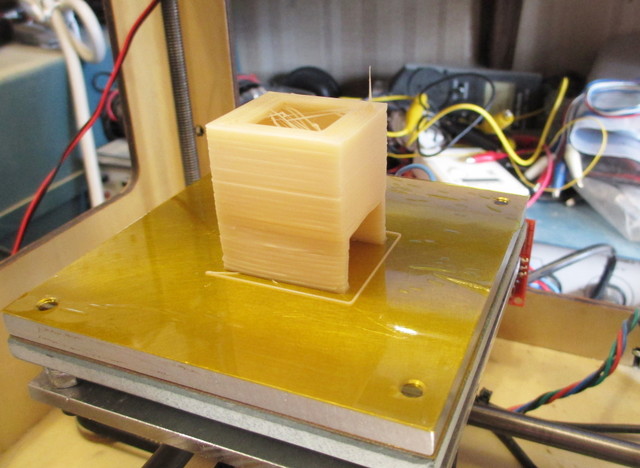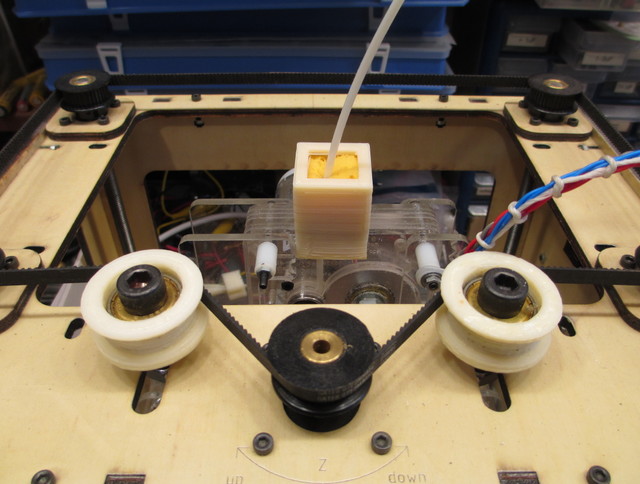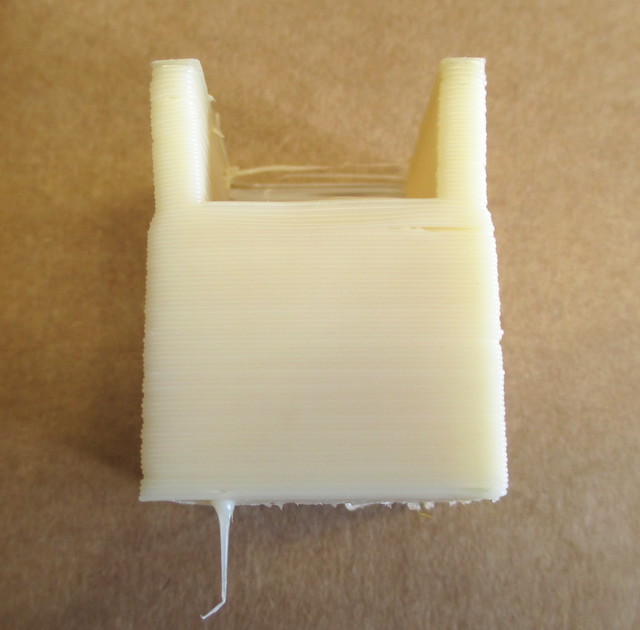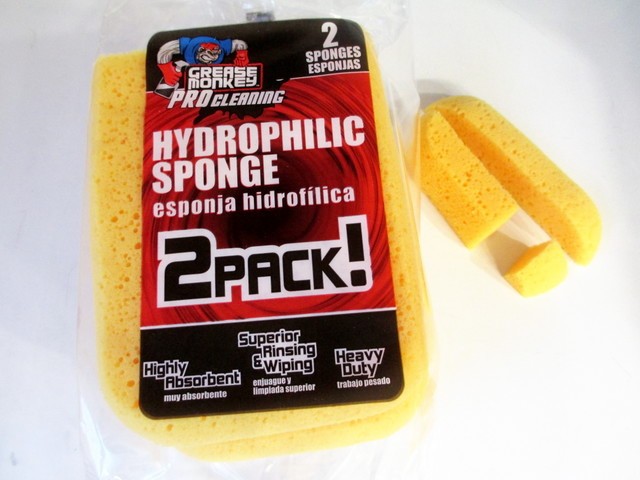I’ve just found this post I had started drafting in December 2013 and hadn’t finished. The remarks about reliability and long periods of disuse are still pertinent — this was one month before the last time I attempted to use it — as is the dust solution.
In the four and a half years I’ve owned my MakerBot CupCake 3D printer, I’ve never had it working well enough to use for more than a week or two at a time. My real frustration has been a lack of understanding what has failed and how to fix it, so much so that it’s been almost two years since I most recently gave up and put it away. [Written in December 2013, and I haven't used it since January 2014.] I know there are newer, more reliable printers on the market; but it sure seems like it should be possible to get the CupCake to work reliably, if I’m willing to upgrade critical parts.
In the intervening time [meaning 2011 to 2013], my friend Joel has run some prints for me on his Thing-O-Matic. Recently while chatting over a print in progress and checking whether the filament was jammed (solution: his build platform’s aluminum heat spreader was bolted tightly around all the edges, expanding when hot, bulging up in the middle progressively over an afternoon of attempted printing, and blocking the nozzle which was enough to jam things up), he mentioned that his nozzle had jammed to the point that he couldn’t even push filament through by hand with pliers (yes, my problem exactly) and that he had solved it (oh???).
Dust.
Joel had disassembled his extruder and lightly drilled most of the filament out of his clogged nozzle with an undersized bit, as I had in the past; then soaked out the rest of the plastic with acetone, as I had also. But when removing the clogged filament, Joel noticed it was quite dirty and made the mental connection with dust on the filament. When he reassembled, he added a toothbrush to wipe dust off the filament on its way in and has also made a point to keep his supply bagged and/or boxed. Since then (and until the expanding heat spreader), he’s had no further troubles with clogging.
This is not a new issue, but I had never heard anyone indicate it had so completely jammed their nozzles that their extruder wouldn’t extrude.
And it fixed my CupCake. Mostly. For a while.
Here ended the text of my 2013 draft, with photographs already lined up for me to narrate the rest of the story. I’ll do the best I can to fill in the details five years later.
The toothbrush had worked well for Joel but I was leery of it only cleaning two sides of the filament, so I wanted to run the filament through a hole or slot in a sponge.
I designed a sponge holder in OpenSCAD that would sit on top of the CupCake extruder. It’s not fastened in place — the legs keep it sitting on top; the filament keeps it from sliding side to side; and the filament pulls it down onto the extruder. The occasional filament reversals never push it far upward.
Since my extruder nozzle was at that moment passing filament, I was able to print the part myself. From the first picture in this post and the string at the bottom of this one, you can see that I printed it in the opposite orientation from the photo — printed in the orientation in which it’s used — because my printer has always been reasonably good at bridging, so I wasn’t worried about it. Still probably would have been smarter to print it upside-down anyway.
In this picture, you can see foreshadowing of a future post — the sponge holder’s legs are warped inward. That occurred because the first layers of the body cooled so rapidly that they shrank while the remainder of the body was still being printed — the same issue that causes corners and edges of people’s bases to pull away from build platforms that aren’t super-sticky.
I had an unused carwash sponge on hand, so I sliced it with a sharp knife, then cut a cube to fit inside the holder. I think I poked a hole through the center with an awl, but it’s possible I sliced in from the edge to provide a path to load the filament.
And I’ve had no further problems with nozzle clogs since then! Which sounds sarcastic since I only used it another month before not touching it for five years … but really, this did solve my clogging problem, and it was evident that it had done so during the remaining time I was actually using it. I’d had frequent mini-clogs and occasional maxi-clogs prior to the filament cleaner, and none since.



